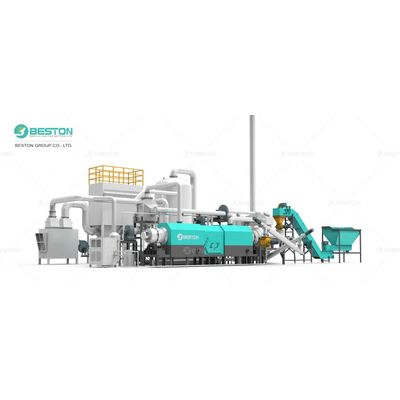


Small Charcoal Making Machine: Low-Cost Pathway to Carbon Sequestration
In recent years, the conversation around climate change mitigation has shifted from simply reducing emissions to actively removing carbon dioxide from the atmosphere. Among the emerging solutions, biochar production through biomass carbonization is gaining attention as both a waste management tool and a carbon sequestration strategy.
While large-scale biomass pyrolysis plants often dominate headlines, they require substantial capital and long-term commitment. For many small businesses, research institutions, or agricultural cooperatives, that level of investment is unrealistic at the start. This is where the small charcoal making machine comes in: a compact, affordable technology that allows users to test feasibility, validate carbon sequestration potential, and generate useful by-products with minimal financial risk.
What Is a Small Continuous Charcoal Making Machine?
A small charcoal making machine is a compact system designed to convert biomass into biochar through the process of carbonization.
Unlike batch-type systems, which process one load at a time, a continuous-type machine offers:
- Steady input and output, keeping the process more efficient.
- Lower labor requirements, since it can run automatically for extended periods.
- Consistent product quality, essential for testing applications like soil improvement or activated carbon production.
Feedstock options typically include:
- Rice husks
- Coconut shells
- Sawdust and wood chips
- Agricultural stalks and husks
- Other organic residues
This versatility makes the machine suitable across a wide range of agricultural settings.
Benefits of Using a Small Continuous Charcoal Making Machine
1. Minimal Investment, Maximum Learning
For entrepreneurs and researchers, the biggest barrier to testing carbon sequestration is often cost. Large pyrolysis plants require millions in investment, but a small machine allows experimentation at a fraction of the price.
This enables users to:
- Run pilot projects.
- Collect data on biochar yield.
- Test feedstock performance.
- Build proof-of-concept results before scaling up.
2. Carbon Sequestration Feasibility
The biochar produced is rich in stable carbon compounds that resist decomposition for hundreds to thousands of years. When applied to soils, it effectively locks carbon away, offering a measurable contribution to carbon-negative practices.
Small-scale machines allow researchers and businesses to answer key questions such as:
- How much carbon can be sequestered from my local feedstock?
- What are the long-term impacts on soil quality?
- Can carbon credits be generated from this process?
Industry Context and Growing Importance
The rise of carbon markets and sustainability reporting has increased demand for technologies that can demonstrate measurable environmental impact. Small charcoal making machines are becoming a popular tool for:
- Universities & Research Institutes: Testing biomass carbonization as part of climate and agriculture research.
- Agricultural Cooperatives: Exploring how biochar improves crop yields and reduces fertilizer costs.
- Startups: Building proof-of-concept data to attract investors in carbon removal or green energy.
- Governments & NGOs: Supporting community-scale projects that align with circular economy goals.
As more organizations look to align with ESG (Environmental, Social, and Governance) frameworks, small machines serve as accessible, verifiable pilot solutions.
Conclusion
The small continuous charcoal making machine is more than just a compact piece of equipment—it is a gateway technology. It enables businesses, researchers, and communities to validate carbon sequestration potential, explore new revenue streams from biochar and by-products, and build the knowledge base needed for future large-scale investments.
For anyone looking to participate in the global transition toward carbon-negative solutions, starting small may be the smartest move.
